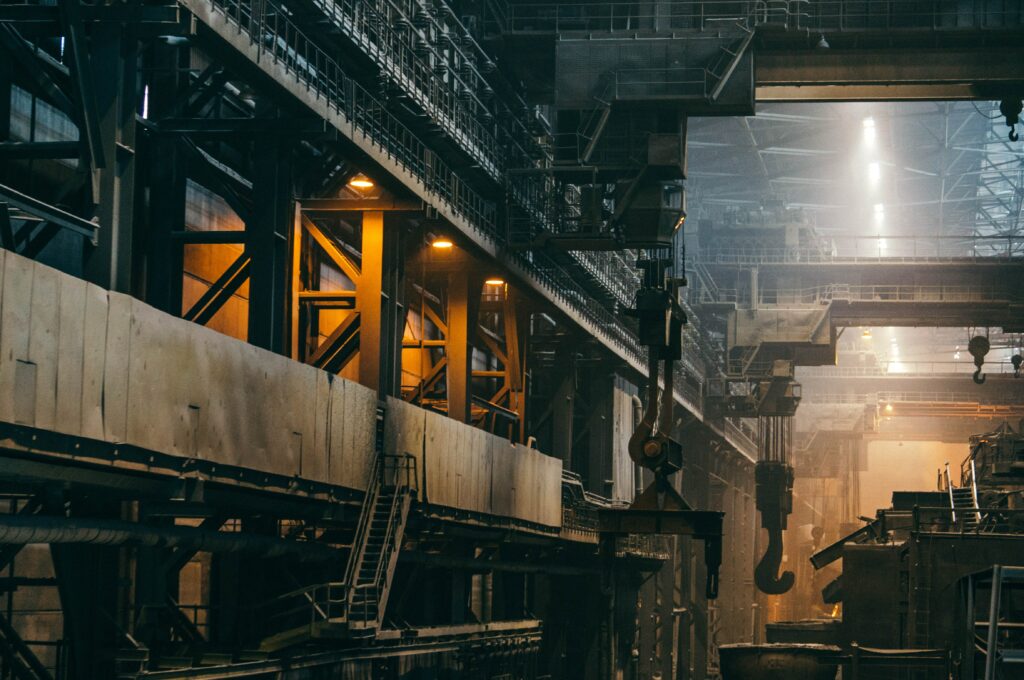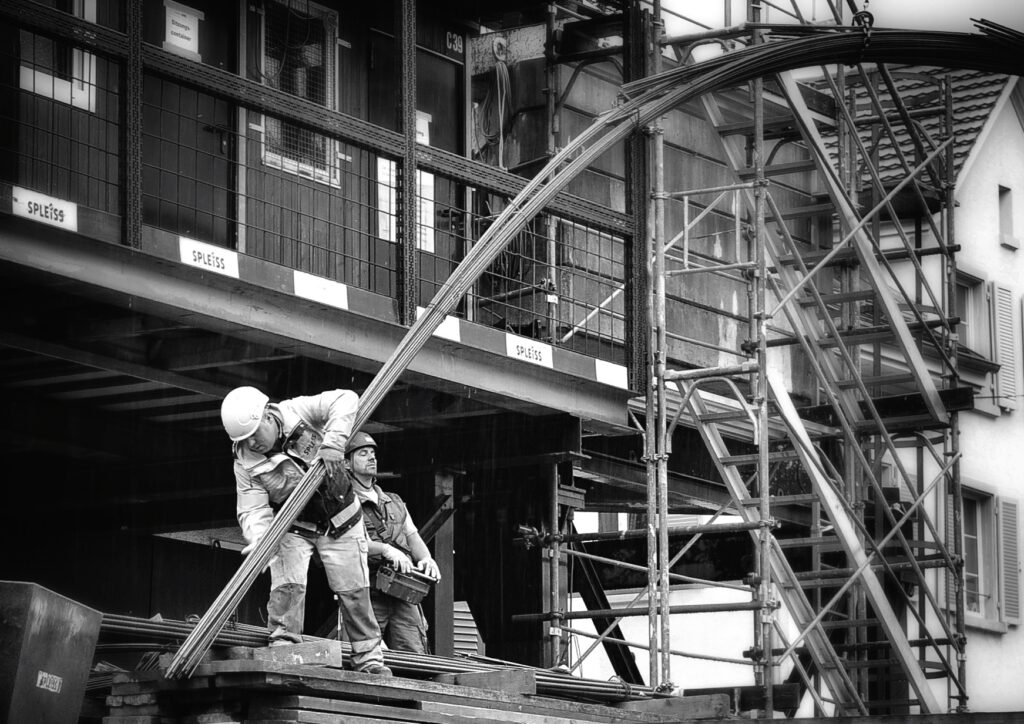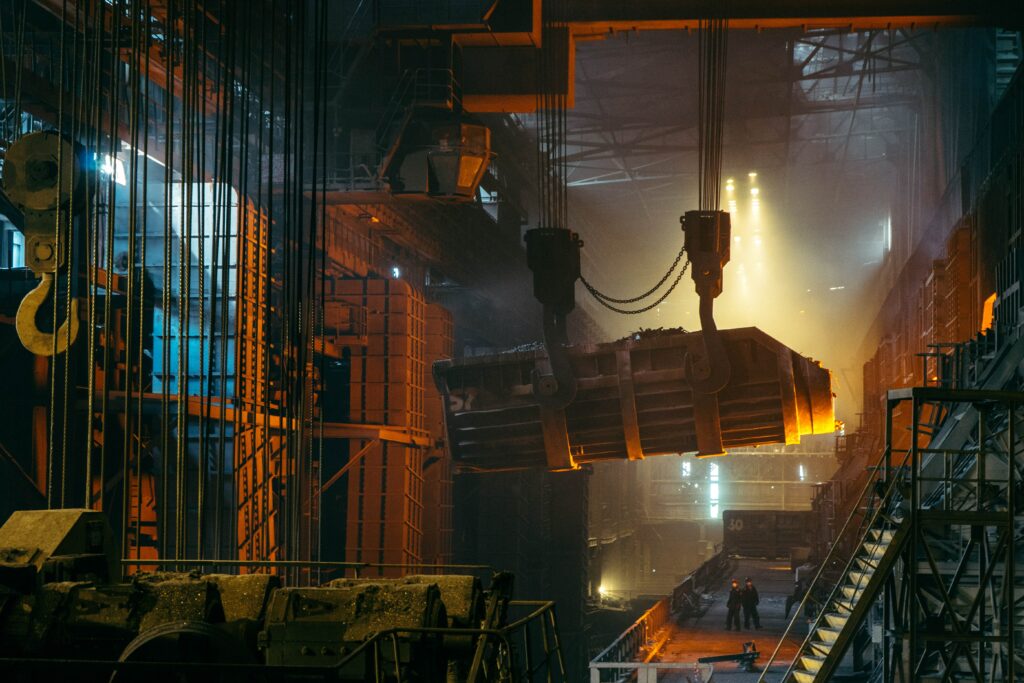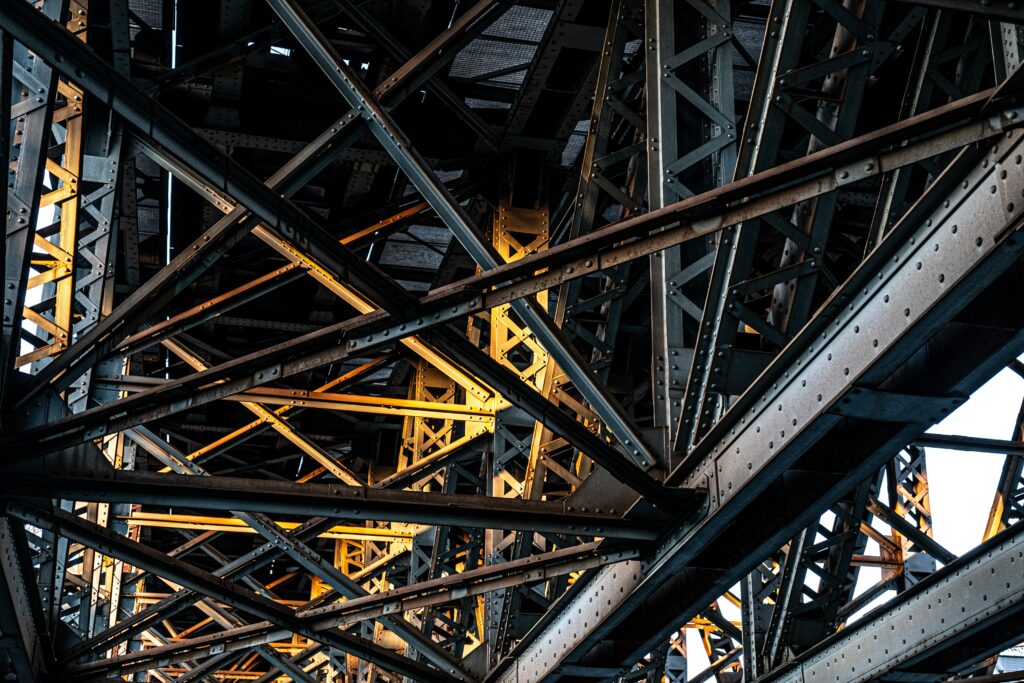
Steel is polluting, energy intensive yet central to construction the world over, and finding better ways to make it has been an elusive challenge for climate action. But in 2021, on a Wednesday in mid-August, in the northern Swedish town of Lulea, something significant happened. The first fossil-free steel rolled off the production line of Swedish steel firm, Hybrit. Hybrit, which stands for Hydrogen Breakthrough Ironmaking Technology, delivered its first green steel produced with hydrogen and fossil-free electricity to Volvo AB, who began creating prototype vehicles with green steel last year.
This is significant because, until now, it has been thought that it is impossible to decarbonise steel. As one of the most energy intensive sectors of the global economy, it is seen as one of the hardest to change because of the need to displace the use of coal in blast furnaces.
While this was part of a trial run to test the mettle of Hybrit’s green steel technology, the firm is eyeing up the full commercialisation of production by 2026. Achieving this goal will reduce Sweden’s total territorial carbon emissions by at least ten percent. The surplus of clean electricity generation in Sweden makes it a prime location for green steel innovation, with $37 billion invested to date.
And Hybrit is not alone: some of the world’s largest steelmakers, like ArcelorMittal, Thyssenkrupp and China’s Baowu Group, which is the biggest producer in the world, are all introducing greener steel prototypes to their production lines. Last year, five of the six biggest global steelmakers pledged to line-up behind the Paris Agreement and set out plans to reduce their operational emissions. And according to the Green Steel Tracker, seven out of the ten biggest steel producing countries have initiated at least one green steel project.
While the term ‘green steel’ is often used loosely to describe any lower carbon steel making process – ‘greener’ would be a better term – there are a variety of technologies used to curtail steel production emissions. The most common technology associated with greener steel is hydrogen-based steelmaking. This approach, which Hybrit is uses, relies on hydrogen instead of coal as both an energy source and a reducing agent, drawing on renewable electricity to power the process and creating a completely fossil-free end-to-end solution. Around 40% of European steel is created through recycling scrap metal, which is also a lower carbon production method. But as steel is already the most reused material in the world, the scope of scale-up recycling to meet the current and future demand for steel is limited and questions remain over the quality of recycled steel. As most steel demand in the future will be met by primary production, hydrogen-based steelmaking is set to become a dominant technology. Very real concerns remain, however, over the viability of the technology to deliver necessary emissions reductions and the role of fossil fuel interests in its promotion.
The important numbers:
|
The modern world, as we know it, is run on steel. This has been true since the advent of the Industrial Revolution, with steel’s foundational role in modern society strengthening as economic development and industrialisation touched every corner of the globe. As we confront the climate crisis, and grapple with the need to rapidly transform the global economy in a matter of decades, there is no sign of any other material replacing steel’s dominance.
A zero emissions global economy will also run on steel. The energy and transport infrastructure required, as well as upgrades to the built environment, all require copious amounts of steel. For instance, every new megawatt (MW) of solar power needs between 35 to 45 tonnes of steel. Wind energy has a more prodigious appetite for steel, with every new MW requiring between 120 and 180 tonnes of steel. According to BloombergNEF, building the amount of wind turbines required to zero out emissions by the middle of the century will require 1.7 billion tonnes of steel – enough to build 22,224 Golden Gate Bridges. By 2050, the global demand for steel is forecast to increase by more than a third. Statistics like this emphasise the importance of prioritising demand reduction and material efficiency alongside efforts to scale up clean production.

This presents a cruel problem: the zero emissions economy we need to create in order to stabilise global temperatures and secure a habitable future is contingent on one of the dirtiest heavy industries. The iron and steel industry is one of the most energy intensive and largest contributors to emissions, responsible for around 11% of global emissions. In terms of the annual contribution to climate breakdown, only the emissions of China and the US are higher than the global steel industry. The emissions intensity of global steel production remains as emissions intensive as it was two decades ago.
The good news is that there are a variety of technologies that are beginning to penetrate the market that will help pave the way for fossil-free steel in the coming decades. And, in the words of Greenpeace chief scientist Doug Parr, the steel industry has “got it”, with a myriad of companies setting out pathways and investing in green technologies. What’s more, the complete decarbonisation of the global steel industry will require additional investment of around $278 billion up to 2050, compared to business-as-usual capacity growth. While still a vast sum, this figure is relatively modest when compared with the $172 trillion estimated by BloombergNEF to decarbonise the global energy system.
Decarbonising the global steel industry also presents an opportunity to rewire economies towards more sustainable, strategic and resilient ends. A report on the UK’s green steel potential from Commonwealth identified five benefits of greening Britain’s steel industry: re-balancing the economy, future-proofing a strategically important sector, deepening resilience by onshoring capacity, retaining unionised jobs, and delivering an ambitious green industrial strategy.
These benefits will ring true in a variety of different contexts and countries too. In particular, being able to onshore the production of steel will decrease industries’ reliance on increasingly stretched and complex global supply chains, while reducing the amount of emissions exported to other steel-producing nations. As the world acknowledges the shifts caused by COVID-19, and the mutual vulnerabilities exposed by the virus, fostering resilience as economies transition is at the top of many governments’ agendas.
Decarbonising the steel industry is critical to this transition. For instance, there can be no Green New Deal without green steel. And without it, we are not going to be able to build the new economy we need for humanity not only to prosper, but to weather the storm.
The transition currently underway in the global steel industry is gaining momentum due to a variety of enabling factors and a constellation of interested – and invested – stakeholders. Here are the main drivers of the pivot towards fossil-free steel:
It seems as if it isn’t just steel producers that ‘get it’ – politicians seem to get it too. A series of ambitious policy programmes around the world are setting the tone for the steel industry’s pivot and stimulating demand for lower-carbon steel. Most recently, President Joe Biden and European Commission President Ursula von der Leyen struck a green steel pact at COP26 that will come into force in 2024. As part of the pact, the US and EU will use tariffs and other trade tools to bolster the production and trade of low-carbon steel and aluminium, while blocking dirtier steel and metals produced in countries such as China. When finalised, this pact will have historical significance as the first time a US trade agreement includes specific targets around the reduction of carbon emissions.

Leveraging trade policy to stimulate greener steel production makes sense as steel is one of the most traded commodities globally, with producers regularly accused of ‘dumping’ to lower prices. It is with this in mind that the EU is sketching out plans for a Carbon Border Adjustment Mechanism (CBAM) to be introduced in 2023, as part of the European Green Deal. Such a mechanism would place a carbon charge on certain goods, such as steel, entering the EU in order to prevent cheaper steel with a much larger carbon intensity undercutting domestic companies that have invested in green steel production.
Policies like this offer countries opportunities to rethink their industrial base and reduce their reliance on imported commodities. In the case of hydrogen-produced steel, powered by renewable electricity, the need to import large quantities of coking coal is removed. As a result of this, governments can look to onshore steel production by going green, placing a strategically important industry within their borders and reducing their exposure to complex and lengthy supply chains.
Beyond trade policy, national and local governments are making use of public procurement programmes to stimulate demand for green steel. Germany, California, South Africa and the Netherlands have all set sustainability standards for steel purchased using public funds. Even the UN’s Industrial Development Organization (UNIDO) has launched its Industrial Deep Decarbonization Initiative (IDDI) that aims to commit ten governments to green public procurement policies for steel within the next three years.
Greener steel technologies are potentially transformative and can be tailored to the specific context of a country or region. Take this story’s protagonist, Hybrit, as an example. The viability of Hybrit’s fossil-free steel is due to Sweden’s surplus renewable energy generation. The project was borne from a collaboration between a state-owned mining company and a Swedish national power company, Vattenfall, to use up the excess electricity generated to power the electrolysers. The same logic applies to electric arc furnaces that melt down scrap.
While this is good news for nations generating a surplus of electricity, there are risks of moving too quickly towards greener steel production without adding more renewable energy capacity. To transform the German steel sector to clean hydrogen, for instance, would require additional renewable capacity equating to around 20% of Germany’s current electricity consumption. Figures like this emphasise the need for more joined-up thinking between state and industry over the coming years, as scaling up renewable energy will provide the foundations for a mass pivot towards green steel. The alternative would be a chicken-and-egg situation where industry is unable to shift due to energy constraints that are outside their ability to control.

And this joined-up approach needs to gather pace because demand for greener steel is picking up. The manufacturing industry has woken up to the fact that while greener steel costs might be higher in the first place, the greater marketing and sales benefits from using low carbon steel more than make up for the initial outlay. Demand for greener steel is set to continue rising as more and more businesses pledge to zero out their emissions beyond Scope 1, making green steel a vital component of business decarbonisation strategies going forward.
With any transition, there are winners and losers. The concentration of the global steel industry suggests that incumbents are well placed to protect their market share through a more incremental move to low carbon steel production. However, the demand for low carbon and fossil-free steel is likely to soar this decade, meaning there are ample opportunities for new entrants to shake things up and send a warning shot to laggards that resisting change will only be to their own detriment.
The global market is currently looking to China with bated breath as the producer of half the world’s steel. At the moment, China generates around two tonnes of carbon emission for every tonne of steel, while EU producers generate half the amount of carbon for the same amount of steel. In order to keep on competing within global markets, China is set to rapidly curtail emissions from its steel sector, eyeing peak emission before 2025 and a 30% cut by 2030. Achieving these targets is no small feat: the majority of Chinese steel is produced in coal-fired blast furnaces that have many operational years left in them, creating significant lock-in and making it less likely the industry will rapidly transition over to renewables.
The impact of these shifts will be disruptive and could completely reshape the global economy and the flows of commodities. One report from BloombergNEF argues that the global steel industry is on the verge of a ‘titantic pivot’ from coal to hydrogen, which would make countries with excess renewable electricity generation and higher-grade iron ore market leaders. The same report points to Brazil, India, Russia, South Africa as the potential benefactors of this pivot, while Australia – the current number one supplier of iron ore – will lose out from this transition.
These shifts are also opening the market up to new actors looking to grab a piece of the value chain. As the case of Hybrit shows, utility companies that are generating a surplus amount of electricity and need to balance grid loads are well placed to cash in on green steel. As are mining companies that produce high quality ores, who can challenge the dominance of steel makers through diversification.

But these transformative shifts only emphasise the need for a more comprehensive interpretation of just transition. Green steel is being positioned as a just transition solution in wealthy, formerly industrialised countries like the UK, as a means of creating and keeping jobs in the country. The industrial shift to green steel will not dampen the demand for mining ores, which is environmentally damaging, even leaving aside the carbon emissions released in the process. If a rapid transition towards green steel is underway, governments and businesses need to ensure that sustainability and equity stretch across the entirety of the value chain, from iron ore mines to the steelworks, to ensure that no worker is left behind.
Demand reduction and material efficiency are also key. These measures can significantly reduce the overall costs of the transition, allowing it to take place more rapidly. One study estimates that demand reduction and material efficiency can reduce the need for primary steel production by more than 50%, which would dramatically shrink the global steel industry, leaving much less production to be totally decarbonised and cut emissions too.